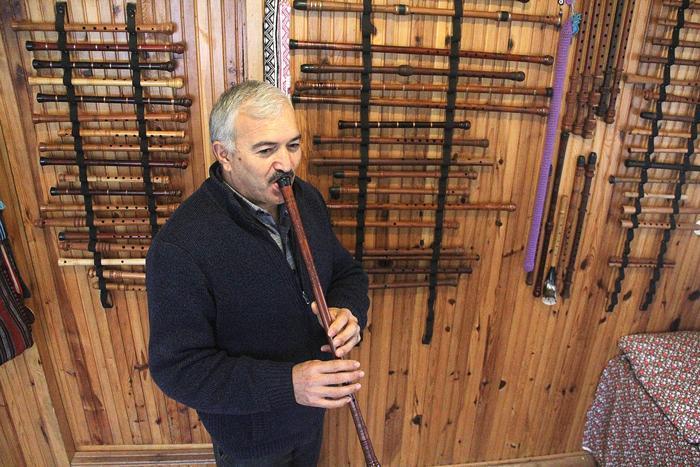Kaval master passing down his skills to next generation
TOKAT

Yaşar Güç, Turkey’s best-known master craftsman and player of the kaval, a wooden flute, is among the last representatives of his profession.
Güç, who lives in Niksar district in the northern province of Tokat, was registered by the United Nations Educational, Scientific and Cultural Organization (UNESCO) on the list of Intangible Cultural Heritage of Humanity as a Living Human Treasure in 2009.
Born in Erikbelen village, Başçiftlik district in Tokat in 1968, he could not continue his education after finishing elementary school.
His professional story began with an apprenticeship at the age of 11 alongside his kaval master father, and he has been devoted to his art for more than 40 years.
Güç chose plum and apricot trees to make the kaval, known also as a shepherd’s pipe.
In 2009, his name was submitted to UNESCO for making and playing the kaval by the General Directorate of Research and Education of the Culture and Tourism Ministry, and in the same year, he was accepted on its Intangible Cultural Heritage list as a Living Human Treasure.
‘Kaval is our own instrument’
Güç told the state-run Anadolu Agency that he started making kavals as an apprentice and still continues as an apprentice.
“Art has no end in learning,” he said, adding he has taught the art to his two children to pass down what he learned from his farther to the next generation.
He said he makes four types of kaval: One “without a tongue” and one “with a tongue,” meaning the presence or absence of a rim, and “long” and “short.”
He added that making a kaval can take up to three days.
Güç emphasized that he prefers two trees in particular when making kavals.
“I’m making kavals with hard wood from plum and apricot trees,” he said.
He also pointed out that the kaval has a special place in Turkish culture.
“The kaval is our own instrument. It came from Central Asia to the present day. From here, it separated to Anatolia and the world. It was known as a shepherd’s pipe because it was first seen in the hands of a shepherd. It has a story too. When we say shepherd, the kaval comes to mind.”
He moved to Niksar district in 2000, and the street where he lives was named Kavalcı, meaning a person who plays the kaval.
Güç said he sends his kavals to artists in Turkey and European countries, adding his biggest desire is to keep the skills of making and playing the kaval alive.
















